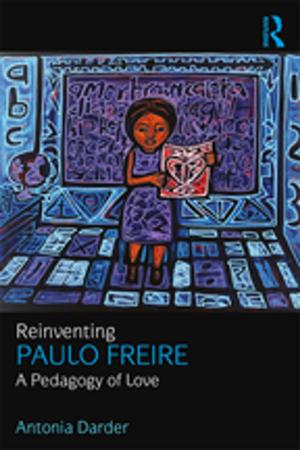Anxiety and Personality
The Concept of a Directing Object and its Applications
Nonfiction, Health & Well Being, Psychology, Mental Health| Author: | Karl Koenig | ISBN: | 9780429910869 |
| Publisher: | Taylor and Francis | Publication: | May 11, 2018 |
| Imprint: | Routledge | Language: | English |
| Author: | Karl Koenig |
| ISBN: | 9780429910869 |
| Publisher: | Taylor and Francis |
| Publication: | May 11, 2018 |
| Imprint: | Routledge |
| Language: | English |
The concept of a "directing object" is based on extensive clinical observations linked to a combination of ego psychology and object relations theory in the tradition of Otto Kernberg and Anne Marie and Joseph Sandler. People with a phobic disposition are those who were not, during childhood, permitted to learn by trial and error and thus gain confidence in their actions. They did not learn to direct their own actions and did not develop confidence in their capability to act successfully. In their inner world, they did not establish an internal directing object. Thus, they now need an external directing object, who watches over them. This has considerable influence on interpersonal relationships and on work. Phobic persons can work without difficulty when there is a external directing object, but they will not be able to work without such a companion. In therapy, they use their therapist as a directing object, which can create the illusion that the phobic patient is already much better. However the patient will fall back into phobic symptomatology when the therapist is no longer available as a directing object. Applying the concept of a directing object helps to understand a phobic person's psychodynamics. This will improve the results of therapy, and also help phobic persons to compensate difficulties arising from the lack of a companion, and deal with difficulties in finding and keeping one. Therapy can help them to develop their own internal directing object.
The concept of a "directing object" is based on extensive clinical observations linked to a combination of ego psychology and object relations theory in the tradition of Otto Kernberg and Anne Marie and Joseph Sandler. People with a phobic disposition are those who were not, during childhood, permitted to learn by trial and error and thus gain confidence in their actions. They did not learn to direct their own actions and did not develop confidence in their capability to act successfully. In their inner world, they did not establish an internal directing object. Thus, they now need an external directing object, who watches over them. This has considerable influence on interpersonal relationships and on work. Phobic persons can work without difficulty when there is a external directing object, but they will not be able to work without such a companion. In therapy, they use their therapist as a directing object, which can create the illusion that the phobic patient is already much better. However the patient will fall back into phobic symptomatology when the therapist is no longer available as a directing object. Applying the concept of a directing object helps to understand a phobic person's psychodynamics. This will improve the results of therapy, and also help phobic persons to compensate difficulties arising from the lack of a companion, and deal with difficulties in finding and keeping one. Therapy can help them to develop their own internal directing object.















